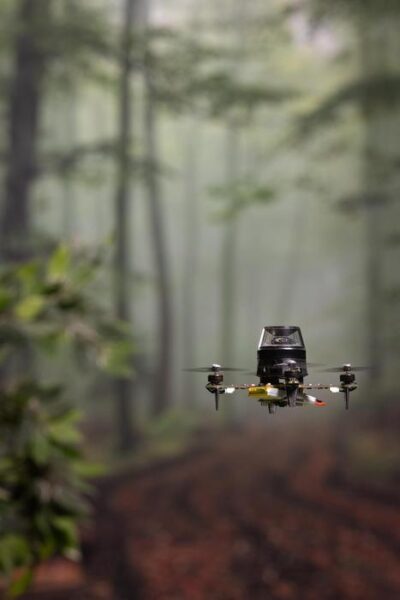Researchers at TU Delft have developed a groundbreaking navigation system for tiny robots, drawing inspiration from the remarkable navigational abilities of ants. This innovative approach allows lightweight drones to navigate autonomously over long distances with minimal computational power, potentially opening up new applications for miniature robots in various industries.
Insect Intelligence Meets Robotic Engineering
The research team, led by Tom van Dijk and Guido de Croon, tackled a significant challenge in robotics: enabling autonomous navigation in small, lightweight robots with limited computational resources. Their solution, published in Science Robotics, combines two key elements of insect navigation: odometry (step counting) and visual memory.
“Snapshot-based navigation can be compared to how Hansel tried not to get lost in the fairy tale of Hansel and Gretel,” explains van Dijk. “When Hans threw stones on the ground, he could get back home. However, when he threw bread crumbs that were eaten by the birds, Hans and Gretel got lost. In our case, the stones are the snapshots.”
This approach allows robots to create ‘visual breadcrumbs’ – snapshots of their environment at key points along their route. By comparing their current view with these stored snapshots, robots can navigate back to their starting point, even after long journeys.
Tiny Drones, Big Potential
The team demonstrated their system using a 56-gram “CrazyFlie” drone equipped with an omnidirectional camera. This tiny robot successfully navigated distances up to 100 meters using only 0.65 kilobytes of memory – a fraction of what conventional navigation systems require.
Professor de Croon highlights the significance of this achievement: “The proposed insect-inspired navigation strategy is an important step on the way to applying tiny autonomous robots in the real world. The functionality of the proposed strategy is more limited than that provided by state-of-the-art navigation methods. It does not generate a map and only allows the robot to come back to the starting point. Still, for many applications this may be more than enough.”
This breakthrough could pave the way for numerous real-world applications. Tiny autonomous robots could be used for tasks such as monitoring stock in warehouses, detecting gas leaks in industrial sites, or early pest detection in greenhouses. Their small size allows them to navigate narrow spaces, while their light weight makes them exceptionally safe around humans.
Why it matters: This research represents a significant step towards making tiny autonomous robots practical for real-world use. By dramatically reducing the computational power required for navigation, it opens up possibilities for smaller, cheaper, and more energy-efficient robots. This could lead to wider adoption of robotic solutions in various industries, potentially improving efficiency and safety in numerous applications.
The study also demonstrates the value of interdisciplinary research, combining insights from biology with engineering to solve complex problems. As we continue to learn from nature’s solutions, we may find new ways to overcome technological challenges.
Looking ahead, this research opens up exciting possibilities for the future of robotics. While the current system only allows robots to return to their starting point, future iterations could potentially expand on this, allowing for more complex navigation tasks. Additionally, this approach could be adapted for other types of small autonomous devices beyond flying drones.
If our reporting has informed or inspired you, please consider making a donation. Every contribution, no matter the size, empowers us to continue delivering accurate, engaging, and trustworthy science and medical news. Independent journalism requires time, effort, and resources—your support ensures we can keep uncovering the stories that matter most to you.
Join us in making knowledge accessible and impactful. Thank you for standing with us!

